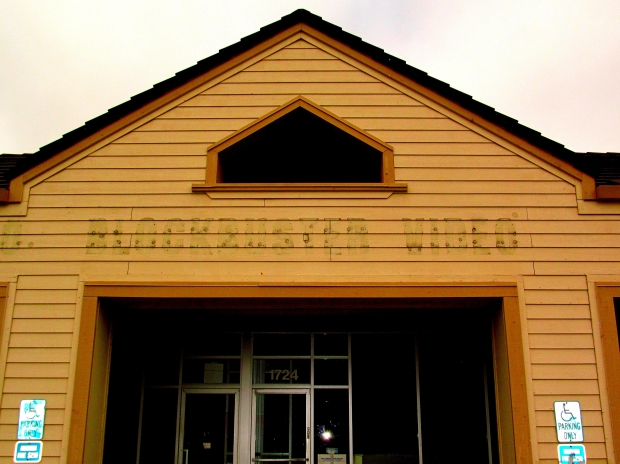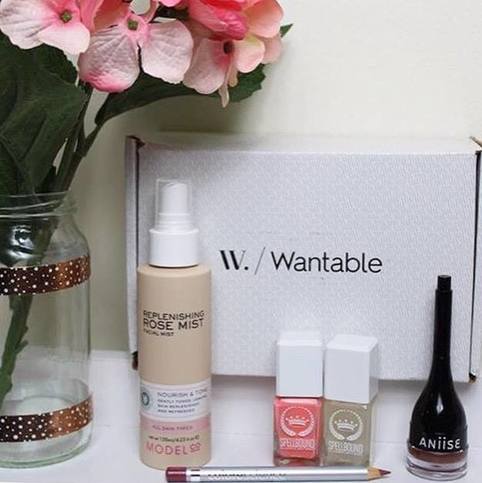|
A harsh reality that is weighing on so many small to large business owners in the apparel industry is the necessity to close the doors to their brick-and-mortar stores. How have we come to this and is it really a bad sign? We are not financial analysts by any means, but as an apparel wholesale vendor to brick-and-mortar retail we have definitely felt the desperation and massive change that is occurring in the retail market, especially the fashion one. With articles from the NY Post titled "Retailers are closing faster than you think" and another one from CNN Money in February, 2016 stating that " Store closings are the hottest trend in retail"- these headlines have to cause every single brick-and-mortar retail owner some level of anxiety and panic. When we released our 11:11 Convertible Jacket a few months ago, part of our sales and promotional strategy was always to introduce it to existing and potential new retailers. We went for a simple email introduction and within a month were hit with the most "I will be closing the doors to my store" replies we've ever gotten. Small retail stores that appeared to be doing OK at the beginning of 2015, have made a complete 180 towards closure. So we now have to ask why? Can we fix it? Just like any other industry there are co-dependable circumstances that build and advance a business, so there isn't a single key factor that has led to this mass closing- It is rather a combination of outside and inside elements that have clashed or come together to create the reality we are faced with now. We've decided to put together some logical (in some cases, opinion-based) explanations to why brick-and-mortar fashion stores are closing at such a fast rate, and why is it happening at this point in time. Amazon: Plain and Simple. Amazon is aggressively taking over every industry with its efficient eCommerce platform having a massive affect on the fashion industry. First and foremost, Amazon has expanded it's fashion department on a large scale creating an easy-to-browse, next-day-shipping platform that is difficult to compete against. Customers simply like the ability to shop from the comfort of their home. This is a time when eCommerce is completely focused on consumer-satisfaction and makes it extremely easy for the customer in question to not only browse the product easily but also receive it the next day with the click of a button. Amazon has also introduced video to it's fashion section, which gives Amazon vendors the ability to display the actual movement and fit of an apparel product. To compete against all the effective options Amazon offers is a massive undertaking for brick-and-mortar stores. Needless to say there is also the issue of price... High Rental/Maintenance and Made In the USA Costs Owning a brick-and-mortar store does not require just an initial high monetary investment- there are continuous business maintenance costs including fixed costs like rent, electricity, store maintenance and major initial investments when bringing in new products every season. These costs often reflect the final retail price of the product. Think about this: If you shop for a specific product at a store in New York City, chances are you will be paying about 20% less for the same product at a store in North Carolina. The real estate and maintenance costs in NYC are simply much higher then in NC and store owners have to make a profit margin to pay their employees and keep the business open, which can eventually reflect in the final retail price. Case in point: the closing of Scoop NYC, a darling of women's high-end contemporary apparel in New York City. Along with other stores like Intermix, Big Drop and Kitson, they closed all of their locations stating high rental and maintenance costs. Even with their unique assortment of new designers, they couldn't compete with lower price points and maintain high costs of daily operations. The real problem is that, the consumer has gotten very tech savvy about finding a bargain. They could be looking at a product they're really interested in your store and ordering it on their phone in real time from a cheaper-priced online source. And guess what? The online source does not require high rental and physical maintenance costs so they are able to offer that product at a cheaper retail price. The other cost issue we've been seeing recently is the wholesale prices that come with a Made in America tag attached. If you own a smaller store, you probably can't order high quantities of products especially if you don't know how well it will do with your customers. Your best option is to work with smaller brands that produce lower quantities and don't ask for high minimums. The problem is that low minimums for a wholesale vendor based in the US is that : 1. Their overhead cost for manufacturing is very high and 2. Because, they produce lower quantities, they have to manufacture in the US (since producing oversees requires a minimum of 1000s of pieces per size). The store owner is faced with no other option but to carry a higher priced product in order to maintain quality and uniqueness, and compete with other stores in the area. Taking all of this in consideration, a lot of brick-and-mortar locations simply don't stand a chance when it comes to the competition they face online and the customer's constant need for bargains. The Need For Fast Fashion And Bargains It all comes down to the customer and what he/she needs. What customers need in this fast-paced, tech-age is for fashion companies to move at an extraordinarily fast pace to meet their needs. The stores that can run fast, offering fast turn around and low prices are usually surviving the race. The stores that fall behind are forced to close their doors. It's just the reality we live in now. Fashion consumers do not look to splurge on high-priced, timeless pieces but rather constantly update their wardrobe at the speed of light with trendy, low-priced items. In an age where trends change at a fast rate, the costumer is keeping up in a smart way, understanding that lower prices will allow them to replenish their closet faster and always stay in trend. However, even some of the largest retailers like JC Penny, Sears and Macy's can't keep up, being forced to close dozens of low-performing locations across the US. That might make some smaller store owners feel better, but it certainly doesn't fix the huge up-hill battle they face. eCommerce Has Evolved Into a Brick-And-Mortar Eating Monster
eCommerce has really changed in the past few years and we're not talking just Amazon. Apparel department stores and even smaller clothing brands have come up with creative ways to get their products into customers' hands. Companies like Wantable and Stitch Fix have made shopping for clothing online less risky and a lot more personable by offering personalized clothing boxes allowing customers to only buy what they want once they receive it and try the options in the privacy of their own home. Online shoppers are no longer just settling for high resolution pictures- They love to see video capturing fit and movement before they take out their credit cards. A website that does this well is Joyus.com which not only displays its apparel products through video, but also discusses these styles in detail. eCommerce has become so personalized, it's beginning to feel like we have a store right in our living room. Why would we need to get in the car and drive a distance to look at a limited selection of items when the entire apparel industry is just a click away? It truly is bitter-sweet but unfortunately, it is what we are moving towards... So what will physically happen to brick-and-mortar stores in the next decade? A reasonable prediction is that these spaces will still be valuable but will not serve the same purpose. They will be heavily blended with eCommerce and will most likely turn into large dressing rooms and warehouses where customers could make returns/exchanges or try on items they found online.
0 Comments
|
The Blog:A journey into our design process, sewing tutorials, fashion tips, and all the inspiring people and things we love. Doina AlexeiDesigner by trade and dressmaker at heart. I spend most of my days obsessing over new fabrics and daydreaming new ideas. Sadie
Executive Assistant & Client Relations Manager Archives
November 2019
Categories
All
|
-
Sewing Tutorials
-
Basics
>
- Aligning Pattern Grainlines To Fabric
- Preparing Fabrics For Sewing
- Pinning Sewing Patterns To Fabric
- Placing Sewing Patterns On Fabric For Cutting
- Rotary Cutters or Fabric Scissors?
- Cutting The Sewing Patterns
- What Are Notches And How To Use Them In The Sewing Process
- Transferring Notches From Pattern To Fabric
- Transferring Seamlines to Fabric
- Staystitching
- Backstitching: A Complete Guide
- Hand Basting: A Complete Guide
- Sewing Continuous Bias Binding
- Darts >
-
Sewing Seams
>
- The Basics Of Seams And Seam Allowance
- How To Sew A Straight Seam
- Sewing Curved Seams
- Sewing Corner Seams
- Trimming And Grading Seam Excess
- Notching/Clipping Seam Allowance for Tension Release
- Sewing Topstitched Seams
- Sewing Corded Seams
- Sewing A Slot Seam
- Sewing A Gathered Seam
- Sewing Bias Seams
- Sewing Seams With Ease
- Sewing Seams With Crossing Seamlines
- Sewing Unlike Fabric Seams
- How To Iron Seams: Ironing Tools And Conventions
- Sewing With Knit Fabrics
- Understanding Stitch Length And Tension
- Sewing Unique Fabric Seams
-
Seam Finishes
>
- Seam Finishing Techniques - Overview
- Applying A Pinked Seam Finish
- Applying A Bias Bound Seam Finish
- Serging And Zigzag Seam Finishes
- Sewing A Self-Bound Seam Finish
- Sewing A French Seam Finish
- Sewing A Hong Kong Seam Finish
- Sewing A Mock French Seam Finish
- Sewing A Turned-and-Stitched Seam Finish
- Sewing Overcast Hand-Applied Seam Finishes
- Sewing A Flat Felled Seam
- Sewing A Hairline Seam Finish
-
Hem Finishes
>
- Garment Hem Finishes: Overview
- Sewing A Double Fold Hem Finish
- Sewing A Single Fold Hem Finish
- Sewing Bound Hem Finishes
- Sewing An Exposed Double Layer Bound Hem
- Sewing A Folded-Up Bound Hem with Pre-folded Binding
- Sewing A Hong Kong Hem Finish
- Sewing A Band Hem Finish
- Sewing A Bias Faced Hem Finish
- Sewing A Twill Tape Hem Finish
- Sewing A Rolled Hem Finish
- Sewing A Shaped Hem Facing
- Using Fusible Hem Tape And Webbing
- Finishing A Lace Fabric Hem
- Finishing A Leather Hem
- Sewing Faced Hem Corners
- How To Finish Lining At The Hem
- Finishing Fabric Corners by Mitering >
- Interfacing A Hemline: Lined And Unlined Examples
-
Sewing Pockets
>
- Curved Patch Pocket With Flap
- Unlined Square Patch Pockets
- Lined Patch Pockets: Two Ways
- Extension On-Seam Pockets
- Separate On-Seam Pocket
- Front Hip Pockets
- Bound Double Welt Pocket
- Double Welt Pocket With Flap
- Self-Welt Pocket (Using Single Fabric Layer)
- Slanted Welt Pocket (Hand-Stitched)
- Faced Slash Pockets: Overview >
-
Sewing Zippers
>
- Sewing Zippers: General Information
- Sewing A Centered Zipper
- Sewing A Lapped Zipper
- Sewing An Invisible Zipper
- Sewing A Fly Front Zipper
- Sewing A Closed-End Exposed Zipper (No Seam)
- Sewing An Exposed Separating Zipper
- Sewing Hand Stitched Zipper Applications
- Sewing A Zipper Underlay
- Sewing A Placket-Enclosed Separating Zipper
- Sleeveless Finishes >
-
Neckline Finishes
>
- Sewing A Neck Shaped Facing
- Sewing An All-In-One Neck Facing
- Neck And Garment Opening Combination Facings >
- Sewing A Bias Faced Neckline Finish
- Sewing A Band Neckline Finish
- Bound Neckline Finishes: Overview >
- Sewing A Semi-Stretch Strip Band Neckline
- Ribbed Neck Band And Classic Turtleneck
- Decorative Neckline Finishes >
- Finishing Facing Edges >
-
Extras
>
- A Complete Guide on Interfacing
- Sewing Bound Spaghetti Straps
- Sewing Spaghetti Straps To A Faced Neckline
- Sewing Ruffles: Overview
- Patterning And Sewing A Circle Ruffle
- Sewing A Gathered Heading Ruffle
- Sewing Double Layer Gathered Ruffles
- Sewing A Gathered Ruffle Into A Seam
- Sewing A Gathered Ruffle To A Fabric Edge
- Sewing A Fabric Surface Slit
- Sewing A Slit Seam
- Hand-Applied Straight Stitches
- Hand-Applied Blind Stitches
- Hand-Applied Overedge Stitches
- Hand-Applied Tack Stitches
- Hand-Applied Decorative Stitches
-
Basics
>
- Custom Bridal
- Custom Apparel
- About
- Blog
Services |
Company |
|






 RSS Feed
RSS Feed

